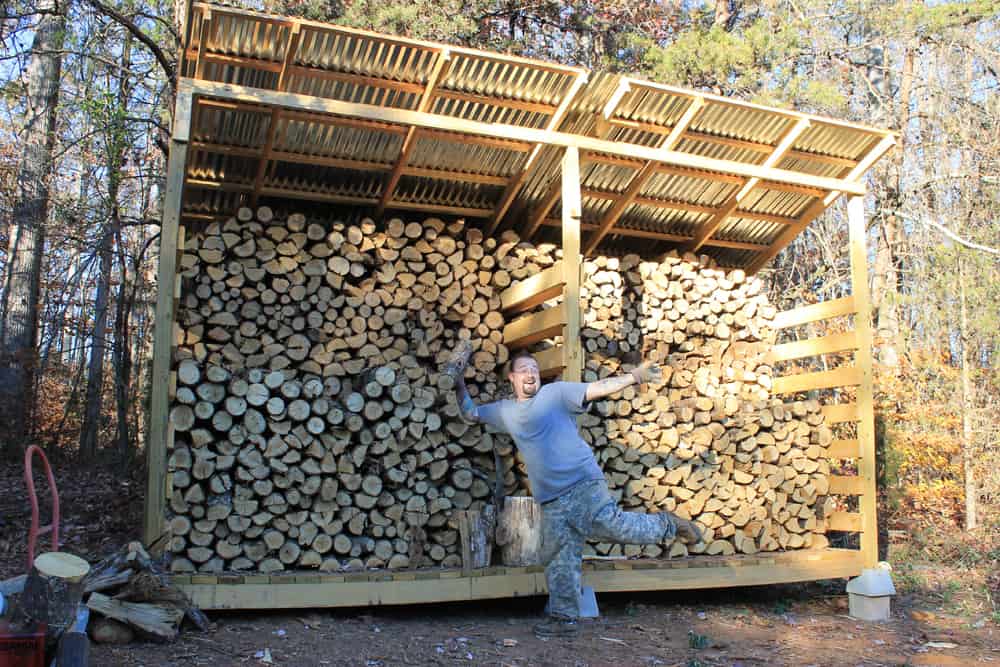Thursday, November 7, 2024
How to keep firewood dry with a well-built storage shed

You know the feeling. It's a chilly evening, the wind's howling, and you're ready to cozy up by the fire. You grab the axe, head out to the shed... and there it is. Your once-proud stack of firewood, now a soggy, moldy mess. Ugh! That's the nightmare of every firewood enthusiast, and it's a nightmare that can be easily avoided.
The key to keeping your firewood dry is to build a well-designed storage shed. But it's not just about having a roof over your wood; it's about building a fortress against the elements, a dry haven for your precious fuel.
So, let's dive into the essential elements of building a firewood shed that will keep your wood dry and ready to burn, no matter the weather:
Location, Location, Location
The first rule of firewood storage: Choose your location wisely. You want to place your shed in a spot that:
Offers good drainage: The last thing you want is rainwater pooling around your firewood. Choose a spot with natural drainage or, even better, build a slight slope away from the shed.
Has good airflow: Good airflow is vital for keeping moisture at bay. Choose a location that's not too crowded or surrounded by dense vegetation.
Gets some sunshine: Sunlight helps dry out the wood naturally, making it easier to burn. Aim for a spot that gets at least a few hours of sunshine each day.
Designing Your Firewood Fortress
Now, let's get into the details of the shed itself:
Size: The size of your shed depends on how much firewood you need to store. A good rule of thumb is to have at least 2-3 feet of space between the wood and the walls for airflow.
Foundation: A solid foundation is crucial for stability and drainage. A concrete slab is ideal, but a gravel base with a layer of landscape fabric will also work.
Walls: You've got options here. If you're going for a traditional look, wooden walls work well. Just make sure the wood is treated and sealed to prevent moisture absorption. You can also use a combination of materials, like siding on the lower portion and lattice for ventilation on the upper section.
Roof: A sloped roof is essential for directing rainwater away from the firewood. Use a weather-resistant material like metal or asphalt shingles. And don't forget the overhang! A 12-18 inch overhang will keep rain from drizzling down the sides of the shed.
Ventilation: This is where things get interesting. Good ventilation is essential to keep the wood dry. You can achieve this through:
Open walls: If your climate allows, you can opt for partially open walls with a lattice or mesh covering to provide airflow.
Vents: Install vents in the walls and roof to create a constant air exchange.
Gable vents: These are particularly effective at drawing air through the shed, especially when combined with an open gable at the top.
Shelving or Racks: Elevating your firewood off the ground allows for better airflow. You can build sturdy shelves or racks using treated lumber.
The Finishing Touches: Making It Work
Roof Overhang: As we mentioned before, a good overhang is crucial for keeping rain off the wood. Aim for 12-18 inches.
Door Placement: Place the door on the side of the shed that faces the prevailing wind, allowing for optimal air circulation.
Rain Catchment: Consider adding a rain gutter and downspout to direct rainwater away from the shed, preventing water buildup around the base.
The Art of Stacking:
It's not just about the shed; the way you stack your firewood is equally important:
Leave gaps: Don't stack the wood too tightly. Leave gaps between logs for airflow.
Stack horizontally: Stack the logs horizontally, creating rows of firewood that allow air to circulate freely.
Don't stack too high: Keep the stack within a manageable height to avoid potential collapse.
Consider a drying rack: For newly cut wood, a drying rack can be a lifesaver. These elevated racks allow for maximum airflow and quick drying.
Extra Tips for Keeping Firewood Dry:
Cover the wood: Use a tarp or waterproof cover during heavy rain or snow.
Dry the wood thoroughly: Make sure the wood is completely dry before storing it. Freshly cut wood needs to dry for at least 6-12 months before burning.
Rotate the stack: Regularly rotate the wood within the stack to ensure even drying.
Keep the shed clean: Remove any debris or leaves that may impede airflow.
It's Not Rocket Science, But It's Important
Building a well-designed firewood shed might seem like a simple task, but it's crucial for keeping your wood dry and ready for those cozy fireside evenings. By following these tips and using the right materials, you'll be building a fortress for your firewood, ensuring you'll always have a warm, crackling fire to chase away the chill. So, what are you waiting for? Get out there and start building your firewood haven!
No comments:
Post a Comment
Note: Only a member of this blog may post a comment.